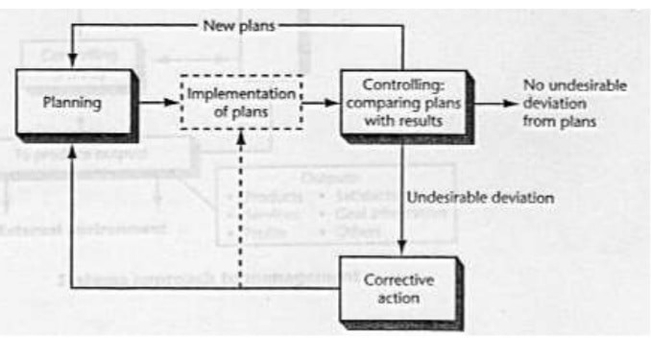
Planning is a crucial aspect of management that involves selecting missions and objectives and deciding on the actions to achieve them. It provides a rational approach to achieving preselected objectives and bridges the gap from where we are to where we want to go. Planning is also important to point out that planning and controlling are inseparable-the Siamese twins of management. Any attempt to control without plans is meaningless, since there is no way for people to tell whether they are going where they want to go (the result of the task of control) unless they first know where they want to go (part of the task of planning). Plans thus furnish the standards of control.
Planning is a complex and comprehensive process involving a series of overlapping and interrelated elements or stages, including strategic, tactical, and operational planning. On the basis of content, plans can be classified as strategic planning, tactical planning, and operational planning.
trategic planning establishes master plans that shape the destiny of the firm. It is the process of deciding on long-term objectives of the organization. It encompasses all the functional areas of business and decides major goals and policies of allocation of resources to achieve these goals. Strategic plans set broad, comprehensive, and longer-term action directions for the entire organization. It is done at higher levels of management and is less detailed because it is not involved with the day-to-day operations of the organization.
Tactical planning translates strategic plans into specific goals and plans that are most relevant to a particular organizational unit. The tactical plans also provide details of how the company or business unit will compete within its chosen business area. Middle-level managers have the primary responsibility for formulating and executing tactical plans. These plans are based on marketplace realities when developed for a business. Conditions can change rapidly in competitive fields such as a Korean company suddenly developing a substantially lower price sports bike. It involves conversion of detailed and specific plans into detailed and specification plans. It is the blueprint for current action and it supports the strategic plans. It is mid-term and more detailed because it involves day-to-day operations of the organization. It is done at the middle level of management.
Operational planning identifies the specific procedures and actions required at lower levels in the organization. It is the process of deciding how the objectives are to be accomplished. It is concerned with the determination of the activities that need to be performed in order to achieve the objectives. It is short-term and is more detailed because it involves day-to-day operations of the organization. It is done at lower levels of management.
In summary, planning is a crucial aspect of management that involves selecting missions and objectives and deciding on the actions to achieve them. It provides a rational approach to achieving preselected objectives and bridges the gap from where we are to where we want to go. Planning is a complex and comprehensive process involving a series of overlapping and interrelated elements or stages, including strategic, tactical, and operational planning. On the basis of content, plans can be classified as strategic planning, tactical planning, and operational planning.
